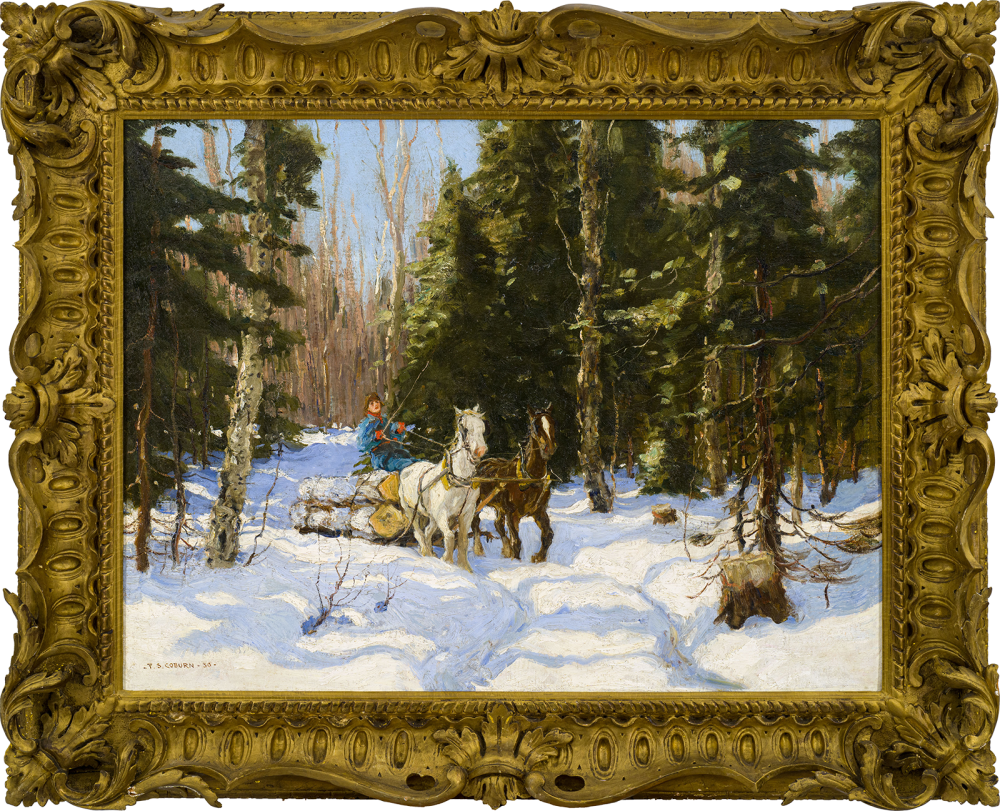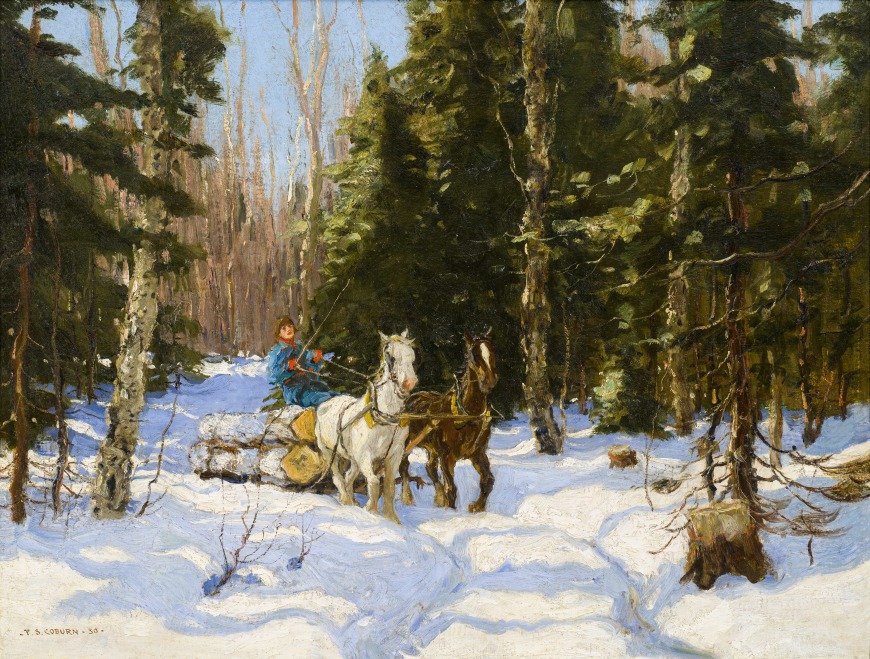76.2 x 102.2 cm
Inscriptions
signed and dated, ‘-F.S. COBURN -30-’ (lower left)Provenance
Sotheby’s/Ritchies, Important Canadian Art, 31 May 2004, lot 15
Galerie Walter Klinkhoff Inc., Montreal
There can be few if any paintings by Coburn that match the brilliance of the marriage of his impressionist play of light and shadow on the winter snow, dancing on the bows of the trees as well as onto the logs and over the majestic and hardworking team of horses. The monumental scale of the painting offered here is fitting to this description of the great Canadian timber industry of the day, one reliant on the men who felled the trees in the winter and the these muscular horses to remove them through the winter cold.
Frederick Simpson Coburn was an artist of the highest degree of technical achievement. Coburn was one of the most highly trained artists Canada sponsored. He was born in the Upper Melbourne area of Quebec’s Eastern Townships, and years later was to return to celebrate their landscape and traditions. In between, the young artist first went to New York City to study art. The Royal Academy in Munich, Germany and London’s Slade School, followed by art studies in Antwerp, Holland allowed Coburn to continue to hone his artistic skills before returning to Upper Melbourne in 1913.
Sketching trips with fellow artist, mentor and close friend, Maurice Cullen, brought about a change. Inspired and challenged by Cullen's fascination with the Canadian winter, Coburn rejected his sombre, Old-World palette to experiment with vivid colours. Like his Quebec colleagues Clarence Gagnon, Suzor-Coté, James Morrice, Maurice Cullen, and others who had returned to Quebec from Europe, he was determined to depict the Canadian winter atmosphere, with its dazzling light, sharp colours and mysterious snow shadows. The native instincts he had so successfully tapped for his habitant illustrations came to full fruition in his oil paintings that reflected the culture and esprit of the times. What began as an experiment resulted in enthusiastic public acclaim.
An astute observer of Coburn’s paintings will remark at his extraordinary improvement and evolution particularly through the 1920s. During the decade Coburn developed from a mildly illustrative approach toward a more personal and visual satisfying interpretation of post impressionist techniques. Generally speaking only, we are comfortable in stating that, generally speaking, he painted his finest legacy in the period 1925 - 1935. In this painting, he is at his absolute best.
In 1928, at the age of 57, Coburn was elected a Member of the Royal Canadian Academy of Art (R.C.A.). He became a Senior Member in 1941. His paintings eventually hung in galleries across the country and in museums and private collections as far away as Australia and Japan.
Coburn's work was exhibited in Canada and abroad. In 1928, he exhibited two canvases at the Imperial Gallery of Art Exhibition in London, England. In 1929, he won the Art Association of Montreal's Jessie Dow prize for his painting, March Morning. In 1932, the Arts Club of Montreal held a special exhibition of his Drummond illustrations. In 1936, he received an honorary D.C.L. from Bishop's University in Lennoxville, Quebec. In 1938, he exhibited two paintings in the Tate Gallery's A Century of Canadian Art exhibition in London-to highlight a few of his achievements.
______________________
Source:
Galerie Walter Klinkhoff Inc., F.S. Coburn Retrospective Exhibition (Montreal: Galerie Walter Klinkhoff Inc., 1986).













